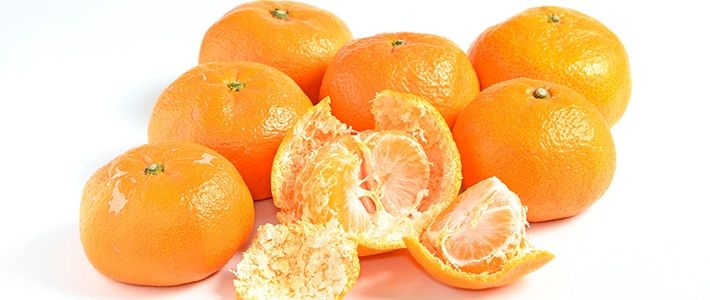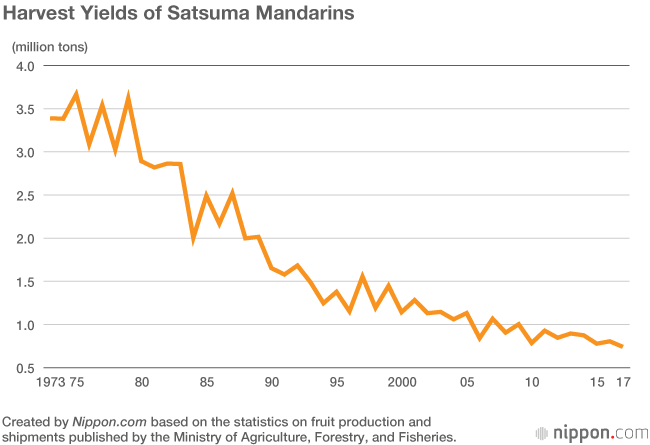
Japanese Mandarin Orange Harvest Drops as Labor Shortages Worsen
Society- English
- 日本語
- 简体字
- 繁體字
- Français
- Español
- العربية
- Русский
More and more mandarin orange groves are being abandoned in Japan due to labor shortages and the lack of someone to take over the operations. The harvest yield per unit area of this favorite fruit is also trending downward since there are not enough workers available to tend to cultivation.
Statistics gathered by the Ministry of Agriculture, Forestry, and Fisheries show that the harvest in 2017 was 741,300 tons, which is 36,500 tons less than the previous year and marks the lowest point since statistics began to be kept in 1973. The harvest last year is only one-fifth the size of the largest harvest on record, which was 3.7 million tons in 1975, and it is also much lower than the 870,000 tons that MAFF set as its target for the year. Given the low crop yield, the price of mandarins rose sharply during the period of high demand around year’s end.

In addition to problems related to the rising age of producers, reasons for the poor harvest in 2017 included damage from typhoons and drought as well as the negative effect of high temperatures on ripening.
Among Japan’s prefectures, Wakayama produced the most mandarin oranges in 2017, at 144,200 tons, making it the nation’s top producer for the fourteenth straight year. The second-highest producer was Ehime Prefecture, at 120,300 tons, followed by Kumamoto Prefecture at 85,700 tons, and Shizuoka Prefecture at 81,700 tons. These four prefectures accounted for around 60% of Japan’s production of mandarins last year.
(Translated from Japanese. Banner photo: © Pixta.)